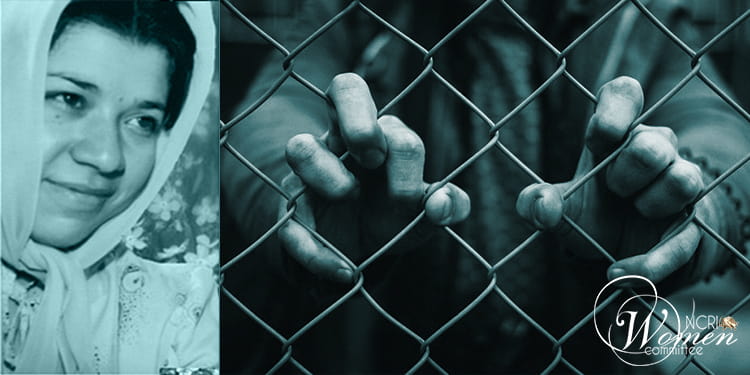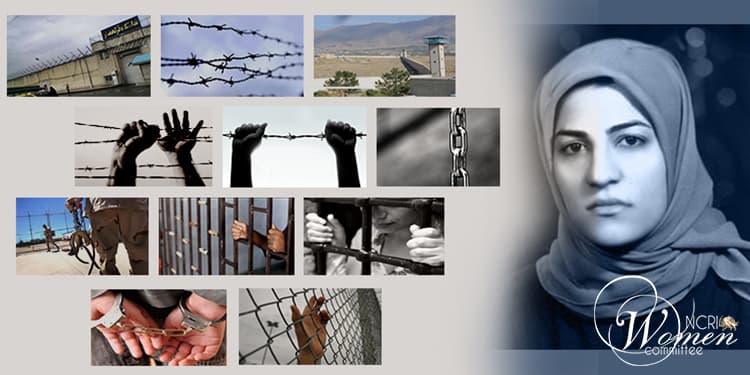From the memoir by Hengameh Haj Hassan – Part 15
In the previous part (14) of the Face to Face with the Beast, we read about how the Iranian state tried to crush prisoners’ spirits in Ghezel Hesar by banning even harmless creative outlets like crafts and crossword puzzles, yet the women always found ways to resist and create joy. In this part, Hengameh begins recounting the horror of “the Cage” (Qafas), one of the regime’s most notorious torture projects designed to break resistant prisoners into repentance.
Transfer to the Cage
Starting in April 1983, a number of resistant women prisoners — including my dearest friend Shekar — were taken to Gohardasht Prison as punishment. They were placed under no-visitation orders, their whereabouts hidden. When their families came looking, they were sent from prison to prison, left wandering in anguish, not knowing where their children were.

Later we learned that they had been taken to special torture wards nicknamed Residential Units — though in reality no one yet knew such places even existed. These were in Ghezel Hesar, apparently repurposed former staff quarters or abandoned work facilities. For about a year, these women endured the most horrific tortures inside those units before being transferred to Evin.
After interrogations and solitary confinement in Evin, they were brought back again to Ghezel Hesar, this time to Ward 1 — to places that later became known as the Cages (Qafas). At that time, neither the “Cages” nor the so-called “Residential Units” were widely known. We prisoners in Ghezel Hesar only vaguely knew that new punishment wards had been opened in Unit 1 and that some male prisoners had been taken there. But none of us had any idea what those places really were.
Then one day in February 1984, they pulled us out of our wards for an “Islamic Guidance” session. We expected yet another cleric or pseudo-cleric to come and lecture us. But to our shock, we saw some of the non-religious women from our ward — those taken away a week earlier for not praying — now standing before us, weeping and begging forgiveness.
Through the microphone, they declared that they had “found faith in Islam,” that they deeply regretted their past actions against “beloved Islam” and “kind Haj Agha” (the prison cleric), and that they felt no resentment toward Islam or the guards for the executions of their loved ones. After all, they said, the guards had only “pulled the trigger” — the real culprits were America, Israel, China, the Soviet Union, and other foreign powers.
That night, we returned to our ward with bitter hearts. We understood that this so-called “victory” for the regime would bring serious consequences for all of us. And indeed, the very next morning, the prison informers grew bolder, harassing us more openly and constantly looking for excuses to torment us. We tried our best not to be provoked.
That day was supposed to be our bath day. As usual, we heated some bathwater to make “bath tea.” Suddenly, they called out about fifteen women by name — among them Azam, Sara, Jamileh, and others whose names I can’t recall — and took them away. The atmosphere was tense and heavy.
One of the turncoat prisoners, Tavous, sneered at me:
“Good! Serves you right! That’s what you get for making ‘organizational tea’ in the bath.”
These shameless creatures had even turned a few buckets of bathwater into an excuse for torture. I spat back at her:
“Shut up, you filthy garbage! I’ll smash your dirty mouth till it bleeds. Get lost, you pathetic bootlicker!”
The stream of curses I threw at her gave me a strange relief. She slinked off — but only moments later, they called my name too. Oddly, I felt glad, because I didn’t want to stay behind while my comrades were taken.
The girls looked at me with worried eyes, helping me make sure I was dressed warmly since it was cold outside. I put on every piece of clothing I had, knowing there might be no return. Ateqeh, Maryam, and the others said their silent, tearful farewells.
They led me to Zir-e Hasht (the prison’s main checkpoint), blindfolded me, and lined me up with the others facing the wall. Haj Davood — the infamous executioner — was there, his ugly voice filling the room:
“So, these are the ringleaders of the hypocrites? Fine! We’re sending them to a place where they’ll either become human, or they’ll die. What a fine ‘repentance factory’ I’ve built!” He repeated his usual drivel with satisfaction.
Then they marched us out, bundled us into a vehicle, and after a short ride brought us into another building that looked much like Unit 3 — but later I learned it was Unit 1. For hours they kept us standing, blindfolded, facing the wall.
Eventually Haj Davood approached me. I was wearing the thick sweater my aunt had lovingly knitted and sent for me. He sneered:
“Who’s this one? Look at that build! She’s clearly a bodyguard.”
Then, with the heavy cable in his hand, he struck me hard on the head. The blow made me dizzy, but I forced myself not to fall. The strikes kept coming, one after another, relentless. I couldn’t think, only instinctively shielded my face, terrified that one strike would crush it.
Finally, when groans escaped me, Haj Davood stopped. “Take her away!” he barked. They spun me around several times to disorient me, but I counted the steps carefully, determined not to lose my sense of direction.
For a prisoner, holding onto time and space is vital — to know where you are, what day it is, and never let the regime erase your orientation. No one had ever trained me for this, but instinctively, through experience, I knew how important it was.
They finally led me into a small, suffocating room. Two wooden planks had been placed upright, half a meter apart, and they forced me to sit between them. The air was thick, hot, and smelled of a bathhouse. Still blindfolded, I touched my head: swollen ridges ran across my scalp where the cable had struck, even through my scarf and chador.
But strangely, I felt no pain anymore — perhaps the skin had gone numb. My only thought was: where are the others? What’s happening to them?
The air grew unbearable, and soon I felt dizzy. Whether from the blows to my head or the stifling heat, I couldn’t tell. Finally, I lost consciousness.
- Haj Davood Rahmani was the notorious warden of Ghezel Hesar prison, infamous for his cruelty, especially the Qafas (“Cage”) project.
- “Bath tea” was a kind of improvised tea brewed by heating bathwater, a small act of normalcy and solidarity that the guards used as a pretext for punishment.
- “Tawab” (repentant prisoners) refers to prisoners who, under torture and pressure, publicly renounced their beliefs and collaborated with the regime. They were often used as tools against their fellow inmates.
- Unit 1 / Unit 3 were sections of Ghezel Hesar prison. The Cages were in Unit 1, designed as torture wards to break resistance.
























